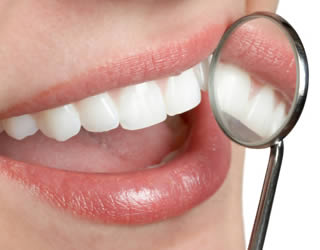Dental Veneers – Their History And Modern Uses

Veneers have been used for many years in cosmetic dentistry but are now more popular than ever.
Porcelain dental veneers are an increasingly popular solution for anyone with badly stained or discoloured teeth, or where chips and other flaws are present and spoil their appearance. They are often thought of as a relatively new invention but modern versions of veneers are, in fact, around one hundred years old. Like many other cosmetic treatments, there have been numerous early attempts to achieve improvements in the appearance of teeth, but a quick search for images of early orthodontics could put someone off for life!
Thankfully times have changed and even orthodontics are hugely improved with modern versions such as Invisalign that are available at the Cygnet Dental Practice for anyone wishing to have straighter teeth.
We thought that it would be interesting to look, today, at dental veneers as they changed throughout the years. We think that you will agree that while early attempts were a good start, most of our Wickford patients will be pleased that they can have the later versions which offer a much improved appearance and performance!
The Hollywood years
Dental veneers first originated from the Hollywood era. Most actors would have smoked then, as did the majority of the population. If you think of the many scenes with Bogart and Bacall, it is hard to remember one in which they weren’t smoking. From a film perspective, this posed a problem as close up romantic shots would easily be spoiled by the sight of badly stained smokers teeth. Enter the dentist Charles Pincus, whose early veneers were held in place by denture adhesive and were temporary in nature, allowing the film crew to take the shots but providing no long term solution for the actor’s discoloured teeth.
The 1920s
During this era and following the original ‘Hollywood smile’, veneers became more popular. The veneers at this time were made from acrylic and were stuck to the front of the natural teeth. Although they offered some benefit and became improved over time, the reality is that acrylic wasn’t a strong material and also stained relatively easily, soon making them more or less ineffective. These continued to be used into the 1950s and 60s and, despite continual improvements, they didn’t really overcome the problems that deterred a lot of people from having them.
The 1980s
The era of big shoulder pads also heralded an increased interest in having cosmetic work done on the teeth. Part of this interest was probably due to the improvement in veneers around this time. Acrylic was replaced by porcelain as the material of choice and this made great improvements both to the appearance and durability of the veneers. As porcelain is a non staining material and is also stronger, this made a big improvement. They also had the benefit of being more natural looking than acrylic veneers did.
2000s onwards
Porcelain is still used today, with great success, and as technologies have advanced, so have veneers. Over time, it became easier to reduce the thickness of these new veneers, meaning that less of the natural tooth needed to be removed, which also improved the appearance. Digital technology has also made it easier and more efficient to produce natural looking ones too. The fact that patients of the Cygnet Dental Practice are able to have these modern versions means that patients are usually delighted with the results when they have this treatment carried out.
While veneers were originally used solely for temporary cosmetic purposes, they now offer a long lasting solution to anyone with badly discoloured or stained teeth. Veneers can last for around twenty years once fitted, providing that they are cared for correctly. This is not their only use though and they can also be used to protect teeth where enamel has become eroded and may be causing sensitive teeth issues. In some situations they may also be used for minor orthodontic purposes such as masking a diastema (gap between front teeth).
If you suffer from any of these problems, veneers might just be the solution for you. You will need to be examined by a dentist of course and we can arrange for you to have an initial consultation with us at our Wickford clinic. If you would like to arrange to have a consultation with us, please give us a call on 01268 733078 and speak to one of our friendly reception team members who will do their best to make a convenient appointment for you.
